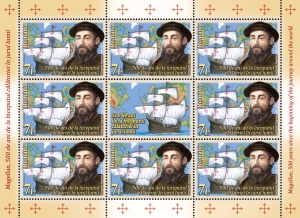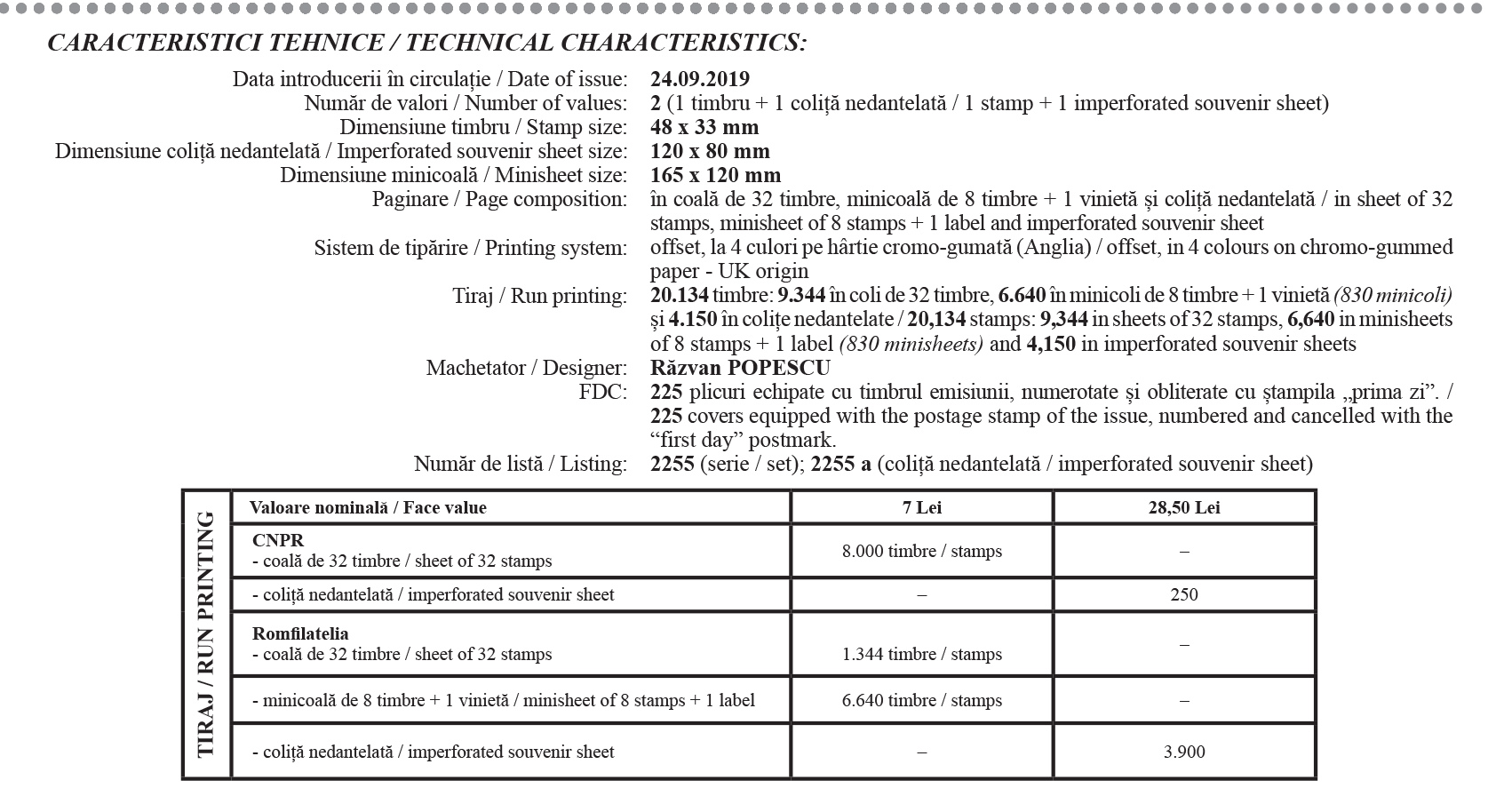 “On September 20th, 1519, Magellan’s fleet broke off the shore.
“On September 20th, 1519, Magellan’s fleet broke off the shore.
As of this year, Spain is beginning to stretch far beyond
the borders of Europe.”
(Stefan Zweig, author of the biography Magellan)
In the context of the five-century anniversary of the beginning of Magellan’s expedition, Romfilatelia invites you to discover the postage stamps issue, Magellan, 500 years since the beginning of the journey around the world.
It is estimated that Magellan was born in 1480, into a noble family of Portugal. At the age of ten, he became the queen’s page, enrolling in Queen Leonora’s Page School. Here he would spend much of his time preoccupied with texts on interplanetary navigation, astronomy, and mapping. These topics served him later in the expedition that immortalized his name in naval and universal history.
In 1505, he joins the crew of the Portuguese fleet in sailing to East Africa, his passion for the open ocean taking him two years later to Malacca. His exploratory spirit urges him to wander the world, possibly even having sailed to Spice Island, the common name for the Molucca Islands in Indonesia. When Magellan’s expedition was still a murmur of hope, the spice trade encouraged seafarers to cross the seas and oceans to procure “especeria” (spices in Spanish).
All territories West of the 46˚30’W demarcation line belong to Portugal, while all the territories East of the demarcation line belong to Spain, a result of the Tordesillas Treaty which was ratified in 1494, a treaty that gave Magellan the freedom to sail in peace. He studied all the navigation charts, known until his time, as well as the Greek texts, reaching the conclusion that all the continents belong to a spherical planet, thus in 1517 he returned to Seville to offer his skills to the Spanish Court but was ultimately lured by adventure and the ocean proceeded to leave shore.
The great explorer set sail on September 20th, 1519 with a fleet of five ships that travelled the distance to Brazil and then followed South American coast to Patagonia. By October 1520 it reached what is now known as the Magellan Strait. Arriving on Homonham Island in the Philippines, in March 1521, the expedition crew encountered an obstacle proven fatal to Magellan and due to a power destabilization between the Homonham leader and a rival, the crew was involved in a war on foreign lands. The initiator of the campaign around the world, Fernando Magellan, lost his life in the battle of April 27th, 1521. The expedition continued under the leadership of Juan Sebastian Elcano, who, together with 18 survivors and a single ship, arrived in Seville, on September 9th, 1522.
Magellan’s daring and ambitious journey around the world, pursued initially in search of personal wealth and glory, offered Europeans much more than just the spices on Spice Island. Even though starting from Europe, the route from West to East, through the Magellan Strait, had already been discovered and mapped, circumnavigation offered the possibility of a world without geographical boundaries. Due to Magellan’s expedition, European geographic knowledge made a spectacular leap.
Not only that he found an ocean of unimaginable expanse, hitherto unknown to Europeans, but he also discovered that the surface of the earth’s globe found in elaborate maps was much larger than previously thought. Finally, although at this point in history it was no longer claimed that the earth was flat, Magellan’s circumnavigation of the globe empirically discredited medieval theory.
His expedition took place in the Age of Discovery, a time that advanced European geographical and cultural knowledge in which extensive explorations abroad took place. These explorations were generated by early attempts of globalization in an era that marked the beginning of colonialism and mercantilism. Fame for his tenacity and ability to navigate, was highlighted in Magellan’s first assessment, which was later referred to as “the greatest voyage in the Age of Discovery” and is considered the most important sea voyage ever undertaken.
On the stamp with the face value of Lei 7, you will discover the image of the greatest navigator from the Age of Discovery, Fernando Magellan.
The imperforated souvenir sheet with the face value of Lei 28.50, illustrates a fragment from Ortelius’s map, dated 1589, depicting the West coast of South America and the ship Victoria. Above the ship, there is a stylized globe surrounded by the inscription “500 years since the beginning of the journey around the world”, representing Magellan’s transglobal expedition. In the upper left corner of the souvenir sheet is the portrait of Magellan superimposed over a stylized helm and above.
The Strait of Magellan and the Pacific Ocean bear his name, the latter called the Magellan Sea until the XVIIIth century.



